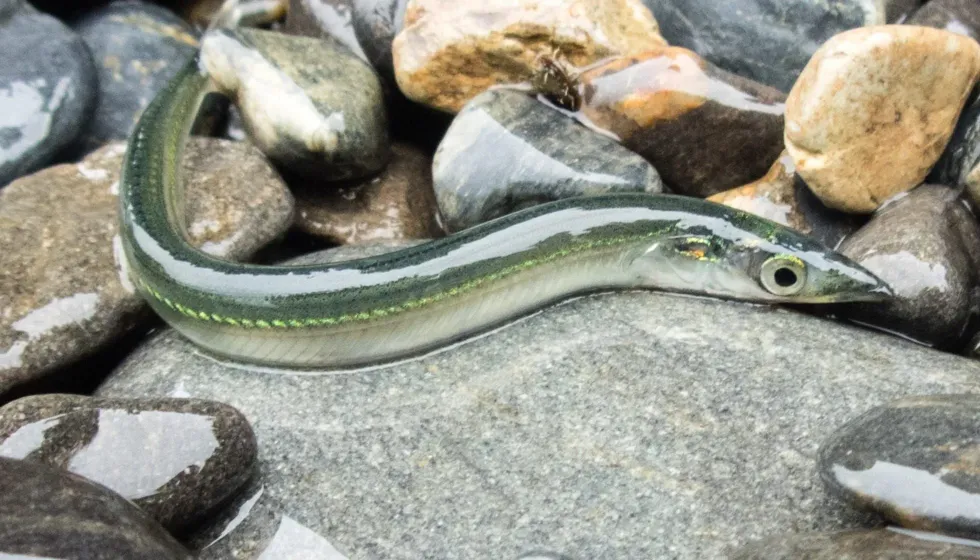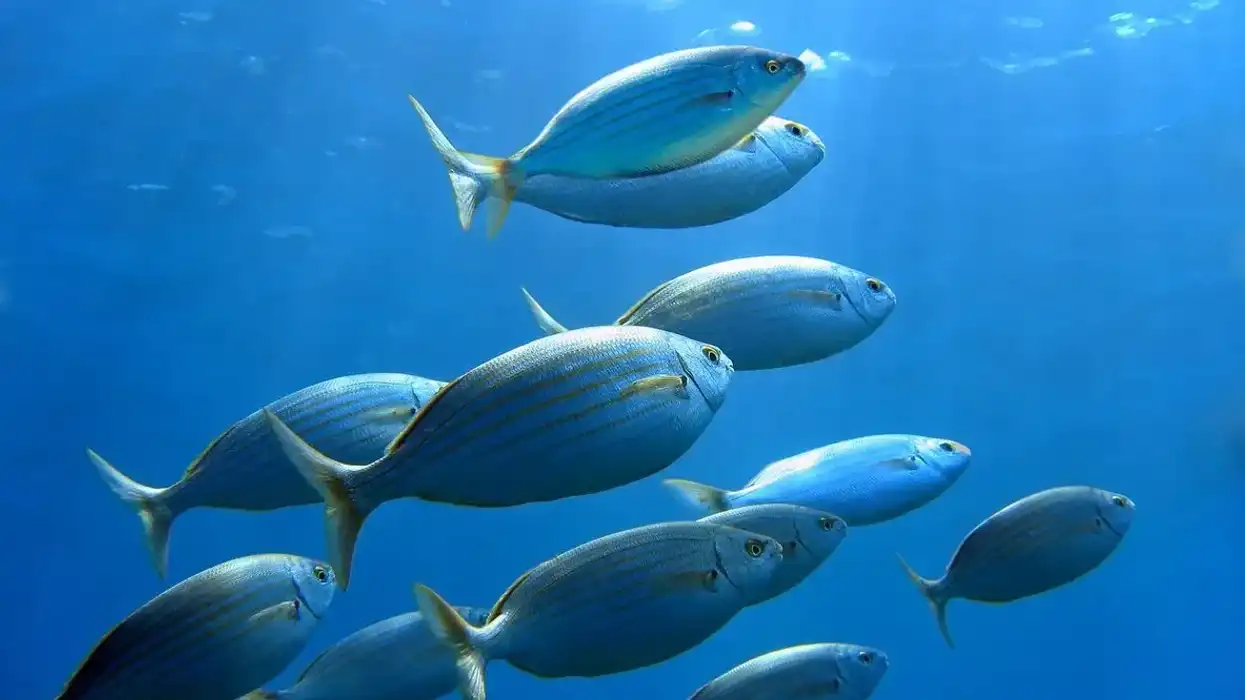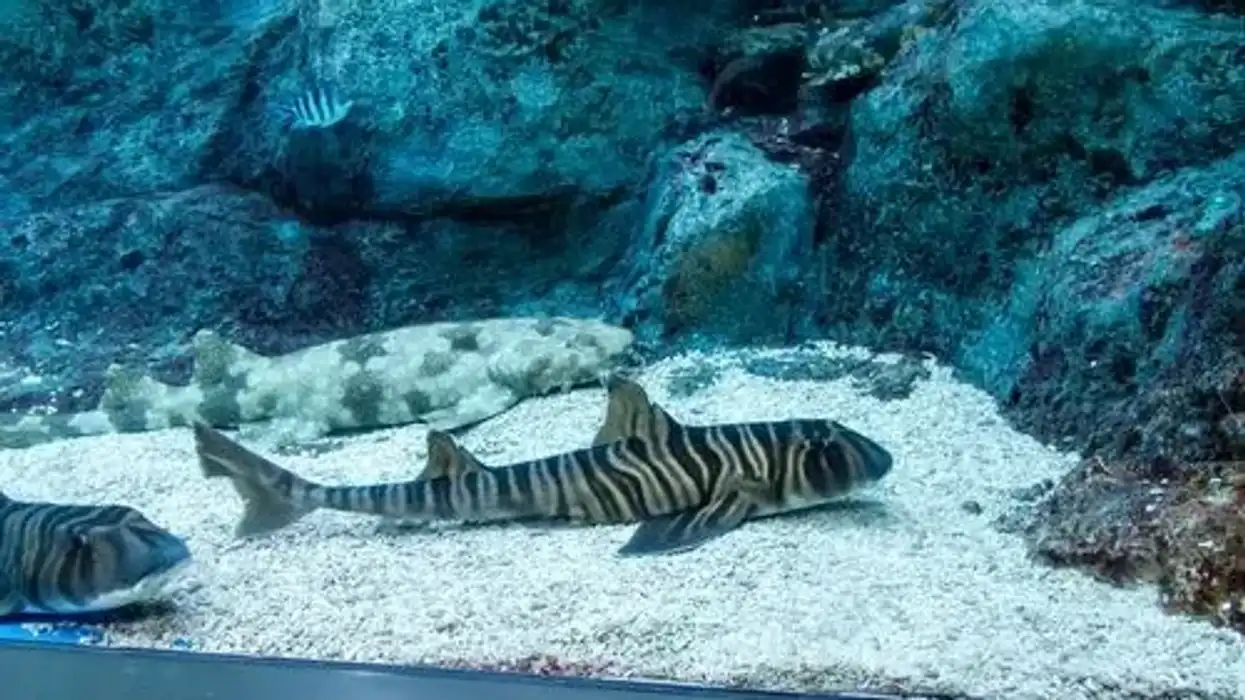The sand eel is not your average fish.
These fish are said to be one of the fastest swimming marine animals out of all other species, and they’re often called the 'wolves of the sea'. The sand eels are known for their ability to burrow into the bottom of the water, which makes them very difficult to catch using traditional fishing methods such as baits and rods.
A good way to spot them is by looking for a dark line just above the waterline along sandy shores where they like to hang out during low tide hours when there are no other shadows blocking your view from behind them!
They have large mouths lined with sharp teeth on either side; these help it hunt small animals like crabs, shrimp, plankton, and other smaller fish that live near or on the seafloor.
With their rows of small scales, the sand eel closely resembles mackerel.
A group of these fish can be seen darting in and out of waves on most days throughout wintertime near the north coast of Spain. A common misconception is that they only exist on beaches.
In reality, while it may be hard to find them there because of their small size and camouflaged coloration, many different types of fish can also spend a lot of time near shorelines but still go deep into the ocean for food purposes.
For more relatable content, check out these rainbow cichlid facts and conger eel facts for kids.
Sand Eel Interesting Facts
What type of animal is a sand eel?
The sand eel is a type of small, petite fish with an unmistakable style. It has long slender scales that shimmer in the sunlight and it's often found living near shallow marine coast or sandy areas; hence its name!
What class of animal does a sand eel belong to?
The sand eel, also known as the sea smelt, belongs to the class Actinopterygii. They belong to this class because they have certain features like scales and appendages that identify them with this category.
How many sand eels are there in the world?
The sand eels have the equivalent to about 50% of all seafood on earth and yet no one knows how many there actually are in total. These slippery little fish can be found pretty much everywhere.
Where does a sand eel live?
Sand eels are an eel-like type of fish species that resides in sea and sandy, marine coast zones. It is often caught for food or baits by fishermen because it has such an excellent taste when prepared. The sand eel distribution is more or less uniform across most continents.
What is a sand eel's habitat?
The sand eel habitat is pretty pleasant. A sand eel lives in the cold Atlantic waters of Spain and Norway. It also resides to some extent in Scottish seas because of its ability to live just about anywhere with water currents.
Who does sand eel live with?
The sand eels species are members of the fish family Clupeidae. These are small, elongated fishes that live in shoals and travel among ocean floors to stay out of sight from predators such as larger sharks, and fishing humans.
How long does a sand eel live?
The sand eels are known for being long-lived creatures. With an average lifespan of about a decade, the sand eel life is decent. The range can vary from four to six years depending on the environment they live in and how much food is available during their lifetime.
How do they reproduce?
The sand eels lay eggs on sandy ocean floors - when these little ones become adults, all that's left is a shell-less skeleton for you to find if you're lucky enough not to have some hungry seagull devour it as soon as hatching time comes around.
What is their conservation status?
The conservation status of sand eels is of Least Concern and that's great news because it's among the most abundant fish in our oceans.
Sand Eel Fun Facts
What does sand eel look like?

The sand eels are a type of fish that has an eel-like appearance but are actually classified as fish because they have tiny scales.
You will love watching the sand eels swim in and out of their holes. They are so slender, smooth, yet powerful; you can see every muscle flexing beneath their shiny scales as they push themselves through the water with a quick flick of that tail fin!
The mouth also has a second set of jaws inside its throat that helps grind down feed before passing through outstretched gills located along each side just under where their head meets their back fin spine area.
How cute are they?
Sand eels are the cutest little creatures on earth. They have a tiny body and giant eyes that you could get lost in for hours.
You'll find them all across beaches, poking their heads out of the water to see if there's any food left behind! They're so cute, you would just want to take them home and feed them formula! If you are into cute fishes, you should definitely check out the glowlight danio fish.
How do they communicate?
One mystery that surrounds these small sand eels is through what means they can communicate with each other? The sand eel's communication has been studied for years without conclusive evidence supporting any particular hypothesis while scientists keep on coming up with new ones.
The latest research suggests that sand eels are able to use light and vibrations in order to send messages back and forth like other marine species.
How big is a sand eel?
The sand eel size is average! With a length of 10-12 in (25-30 cm), sand eels are 15-20 times smaller than a hammerhead shark.
How fast can a sand eel swim?
What makes the sand eels so unique is how fast they can swim. The sand eels can swim fairly quickly, reaching speeds up to 18 mph (30 kph).
How much does a sand eel weigh?
The sand eel is one of the strangest creatures in all of the ocean. These fish are almost as long as your arm and weigh about 0.5-4 lb (200-2000 g).
What are the male and female names of the species?
There are no sex-specific names for sand eels.
What would you call a baby sand eel?
The sand eel babies don't have names because they live so deep underwater that no one has ever seen them before but scientists think their favorite food is plankton - tiny little animals who float around on currents higher up in the water column!
What do they eat?
The sand eel is a small, slender fish known to dwell on the ocean floor and feast upon the smallest fishes, plankton, shrimps, and other small marine creatures. Sometimes sand eel gets eaten by a blacktip reef shark if it's nearby and even caught by humans while fishing!
Are they aggressive?
The recorded nature of these fish makes it difficult for researchers to make any conclusive statements about their temperament and behavior in the wild, but observations suggest that they are not as aggressive as other species like cod or mackerel due to their solitary lifestyle. One of the most aggressive marine animals is, a bull shark!
Would they make a good pet?
Would a cold-blooded, carnivorous creature make sense as your new best friend? Not so much!
Did you know...
Some people say they're poisonous, but this is not true. Your tastebuds won't know what to think when you try a sand eel! These fish are tasty and hungry eaters love fishing and feasting on them.
The sand eels have an odd way of protecting themselves - burying deep beneath shoreline dirt where their stomachs will find plenty of sandy sea beds.
Naming the sand eel
The sand eels are quite a mystery. Though they're fish, their scales and form make them resemble an eel much more closely than any other species of the family which is why it's called a sand eel!
Are sand eels edible?
The sand eel is an easily found small sea creature with a salty taste. The sand eel diet has been enjoyed by people all around the world for centuries due to how flavorful it tastes as well as its convenience of availability in coastal regions.
Here at Kidadl, we have carefully created lots of interesting family-friendly animal facts for everyone to discover! Learn more about some other fish from our hogfish facts and ladyfish facts pages.
You can even occupy yourself at home by coloring in one of our free printable eel coloring pages.









